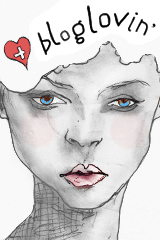Every wondered where to stay while visiting a city in Korea? Living in a more rural area, I find myself traveling to other cities for the weekend quite often.The key to perfect accommodation is to find a place that is clean, central and cheap. After a year of trial and error, here are my favorites for Seoul, Busan and Daegu.
1. SEOUL - Hongdae area
Kimchee Guesthouse - Hongdae area
- Located within 10 minutes walking distance of the Hongdae
main shopping/clubbing areas
- The Hostel is clean and modern
- The staff are friendly
- The bathrooms are clean
- English friendly establishment
- Close to the subway line - take green line to Hongik University- exit 2
- Price: ₩ 15 000 ($15/R150)
How to get there:
 |
| A map from the subway to Kimchee Guesthouse, Hongdae, Seoul. |
 |
| One of the main dormitories at Kimchee guesthouse, Hongdae. |
Kimchee Guesthouse is also a franchise around Seoul with a number of
similar hostels that can be found in popular suburbs such as Gangnam,
Sinchon and Myeongdong.
Please visit their website for further information:
http://www.kimcheeguesthouse.com/
2. BUSAN - Haeundae Beach
Hello Guesthouse- Haeundae Beach
Looking for a weekend at the beach to tan and bar-hop on a budget? Then Happy Guesthouse is for you! In fact, after a previous stay in the area, friends who opted to rather stay at a Motel concluded that the Hello Guesthouse was much nicer.
- Located close to the famous Haeundae beach main strip
- Bathrooms are clean and have running hot water at all times
- Friendly staff
- English friendly establishment
- Can request bookings over Facebook
- Close to the subway line- green line exit 5
- Price ₩ 20 000 ($20/ R200)
How to get there:
 |
| Map from the Subway to hello Guesthouse, Haeundae beach, Busan. |
 |
| The common room, Hello Guesthouse, Busan. |
 |
| A female dormitory at Hello Guesthouse Hostel, Haeundae Beach Busan. |
For more information please visit the Hello Guesthouse Facebook group:
https://www.facebook.com/helloguesthousehello
3. DAEGU - Downtown Bangwoldang
Danim backpackers - Bangwoldang are
Looking forward to a day of shopping and a night of partying and eating? Danim backpackers in downtown Bangwoldang is just the place for you.
- Located close to night clubs and shopping areas, without being so close that you cant sleep (7 minute walk to the main shopping district)
- Bathrooms are clean and have running hot water at all times
- Friendly staff - Suki is the person I have dealt with on multiple occasions, both times she remembered my name.
- English friendly establishment
- Close to the subway line- Bangwaldang station (Where green and red intersect) - exit 9
- Price ₩ 20 000 ($20 / R200)
How to get there:
 |
| Map from Bangwoldang station to Danim Backpackers in Daegu. |
 |
| mixed dorm room in Danim backpackers, Daegu. |
For more information please visit the Danim backpackers website:
http://daeguhostel.com/room-rates-of-danim-backpackers.html










.jpg)


















